 |
 |
|
 |
 |
globular and open clusters
Visit also our mobile webpage
Globular Clusters
A globular cluster is a spherical collection of stars that orbits a galactic core as a satellite. Location of Globular clusters in our Milky Way. Here you can see, that the gc M4 shown in the Astro photo above, is one of the nearest globular clusters
relative to our Sun.
(Source Internet, Credit of this drawing NASA/ESA and A. Feild).
Also other galaxies have globular clusters, see f.ex the Sombrero galaxy in section galaxies.
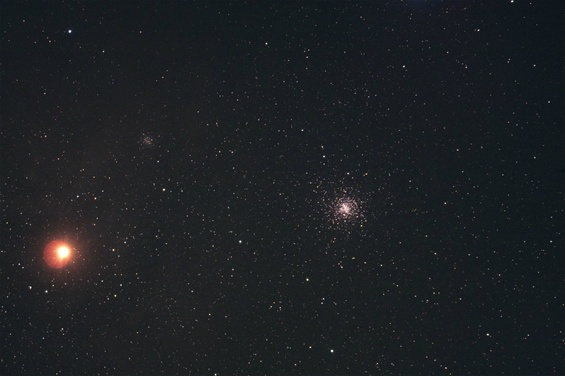 Globular cluster M4 in Ophiuchus, 7000 lightyears away, diameter 53 lightyears, i.e. 30%of the size of Omega Centauri-the relative largest gc to be seen from Earth(see photo below)- but only half its distance. Left in the photo you can see Antares and above another globular cluster, NGC 6144, 27000 lightyears away and 71 lightyears diameter. M4 covers an area nearly as large as the full moon.
Astro photo taken using 80/480 triplet APO at Emberger Alm, Carinthia, Austria.
Globular cluster M4 in Ophiuchus, 7000 lightyears away, diameter 53 lightyears, i.e. 30%of the size of Omega Centauri-the relative largest gc to be seen from Earth(see photo below)- but only half its distance. Left in the photo you can see Antares and above another globular cluster, NGC 6144, 27000 lightyears away and 71 lightyears diameter. M4 covers an area nearly as large as the full moon.
Astro photo taken using 80/480 triplet APO at Emberger Alm, Carinthia, Austria.
 Globular cluster M4, magnified detail, you can see, how sharp the image of the APO is, even when heavily magnified.
Globular cluster M4, magnified detail, you can see, how sharp the image of the APO is, even when heavily magnified.
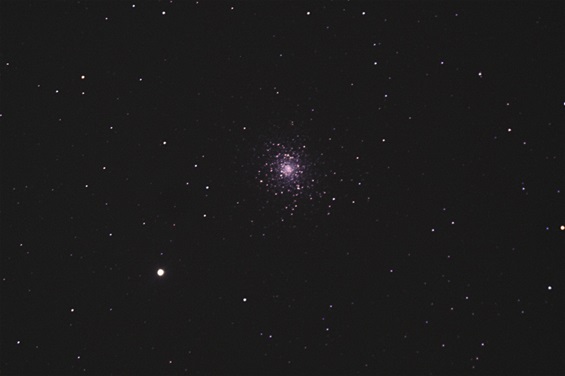 Globular cluster M5 in Serpens, 24,000LY away, diameter 160 LY, so nearly the size of Omega Centauri, but farer away.
Astro photo taken with 80/480 triplet APO on Astrotrac mount in Bodrum, South-West Turkey coast.
Globular cluster M5 in Serpens, 24,000LY away, diameter 160 LY, so nearly the size of Omega Centauri, but farer away.
Astro photo taken with 80/480 triplet APO on Astrotrac mount in Bodrum, South-West Turkey coast.
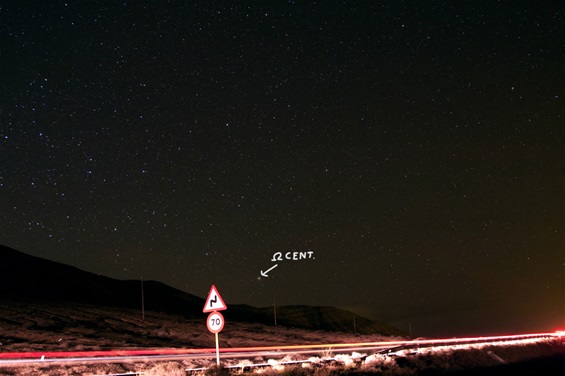 The globular cluster Omega Centauri over Fuerteventura, Spain, it can be only observed from sites south of Central Europe. It covers an area larger than the full moon and can be seen with the naked eye.
The globular cluster Omega Centauri over Fuerteventura, Spain, it can be only observed from sites south of Central Europe. It covers an area larger than the full moon and can be seen with the naked eye.
 Omega Centauri, the relative largest globular cluster to be seen from Earth. Distance from Earth 17000 lightyears diameter about 180 lightyears. It covers an area 20% larger than the full moon or 30% larger than M4 although it is 2,5times farer away than M4!!
Astro photo taken using a Canon 200mm L lens from the top of Ataviros mountain in Rhodos, Greece
Omega Centauri, the relative largest globular cluster to be seen from Earth. Distance from Earth 17000 lightyears diameter about 180 lightyears. It covers an area 20% larger than the full moon or 30% larger than M4 although it is 2,5times farer away than M4!!
Astro photo taken using a Canon 200mm L lens from the top of Ataviros mountain in Rhodos, Greece
 Close up of Omega Centauri. With its diameter of about 180 lightyears it's by far the most massive globular cluster in our Milky Way, and some scientist believe even that it is a disrupted dwarf galaxy. Distance between stars in the cluster is only 0,1LY! In comparison, the Oort Cloud which is the believed source of comets in our solar system has a diameter of 1,6LY.
Astro photo taken using 6 inch f4 Photo Newton on Astrotrac mount and Carbon tripod; stack of 6 2-3 minutes exposures taken on the island of Fuerteventura, Spain.
Close up of Omega Centauri. With its diameter of about 180 lightyears it's by far the most massive globular cluster in our Milky Way, and some scientist believe even that it is a disrupted dwarf galaxy. Distance between stars in the cluster is only 0,1LY! In comparison, the Oort Cloud which is the believed source of comets in our solar system has a diameter of 1,6LY.
Astro photo taken using 6 inch f4 Photo Newton on Astrotrac mount and Carbon tripod; stack of 6 2-3 minutes exposures taken on the island of Fuerteventura, Spain.
 Globular Cluster M15 taken with Celestron C14 and focal reducer at f5, 6 exposures bewtween 1 and 5 min and ISO 400,800 and 3200.
Globular Cluster M15 taken with Celestron C14 and focal reducer at f5, 6 exposures bewtween 1 and 5 min and ISO 400,800 and 3200.
 Globular Cluster M 15 in Pegasus composite of exposures taken with Meade 10inch SC and Celestron C14 :
3 exposures at 800 ISO 2 to 5 minutes at f10
taken with Meade SC 10inch and Canon EOS 600d on EQ 5 mount at Schrick, 20 km North of Vienna.
and Celestron C 14 6 exposures 800, 1600 and 3200 ISO at f11.
M 15 has a diameter of 115 lightyears(2/3 of Omega Centauri) and is 33.000 LY away(twice the distance of Omega Centauri). There is a planetary nebula Pease 1 in the gc!(see next picture), it's one of only 4 planetary nebulae so far detected in globular clusters!
Globular Cluster M 15 in Pegasus composite of exposures taken with Meade 10inch SC and Celestron C14 :
3 exposures at 800 ISO 2 to 5 minutes at f10
taken with Meade SC 10inch and Canon EOS 600d on EQ 5 mount at Schrick, 20 km North of Vienna.
and Celestron C 14 6 exposures 800, 1600 and 3200 ISO at f11.
M 15 has a diameter of 115 lightyears(2/3 of Omega Centauri) and is 33.000 LY away(twice the distance of Omega Centauri). There is a planetary nebula Pease 1 in the gc!(see next picture), it's one of only 4 planetary nebulae so far detected in globular clusters!
 magnified detail of the astro photo above.
the arrow indicates the location of the planetary nebula Pease 1.
magnified detail of the astro photo above.
the arrow indicates the location of the planetary nebula Pease 1.
 Globular cluster M13, 28000 lightyears away, diameter about 140 lightyears,i.e. 60% farer away than Omega Centauri and al bit smaller. It's the relative largest gc to be seen North of the celestial equator. It covers an area about 50%of the full moon respectively 40% of Omega Centauri. Compare with photo above taken with the same lens.
Astro photo taken using a Canon 200mm L lens Alentejo Portugal
Globular cluster M13, 28000 lightyears away, diameter about 140 lightyears,i.e. 60% farer away than Omega Centauri and al bit smaller. It's the relative largest gc to be seen North of the celestial equator. It covers an area about 50%of the full moon respectively 40% of Omega Centauri. Compare with photo above taken with the same lens.
Astro photo taken using a Canon 200mm L lens Alentejo Portugal
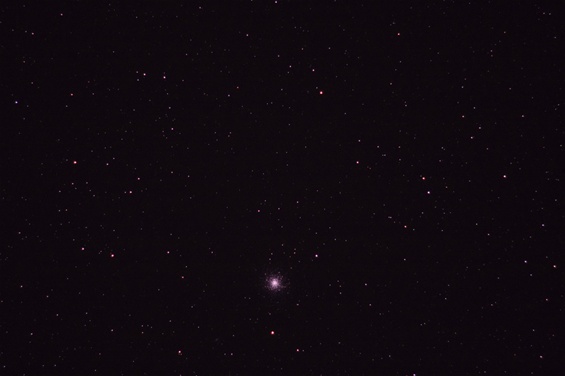 Globular cluster M13 in Hercules.
Astro photo taken using a Canon 200mm L lens and 2x teleconverter guided by Celestron C 8 on EQ 3 mount(see Astronuders hotels) at the Island of Mykonos, Greece
Globular cluster M13 in Hercules.
Astro photo taken using a Canon 200mm L lens and 2x teleconverter guided by Celestron C 8 on EQ 3 mount(see Astronuders hotels) at the Island of Mykonos, Greece
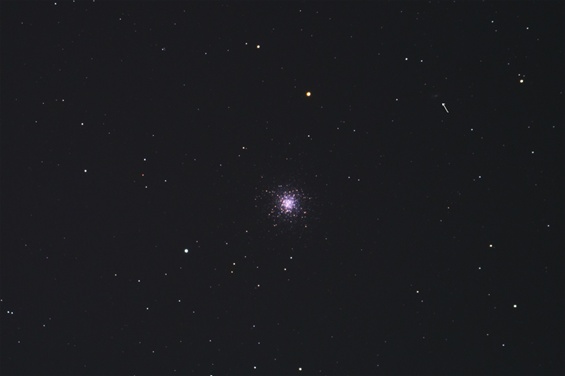 GC M 13, astro photo taken with Explore scientific 80/480 APO, f6.
3 exposures 200 ISO 6 min each, Canon EOS 600d modified; magnified detail.
see also the galaxy NGC 6207(arrow).
GC M 13, astro photo taken with Explore scientific 80/480 APO, f6.
3 exposures 200 ISO 6 min each, Canon EOS 600d modified; magnified detail.
see also the galaxy NGC 6207(arrow).
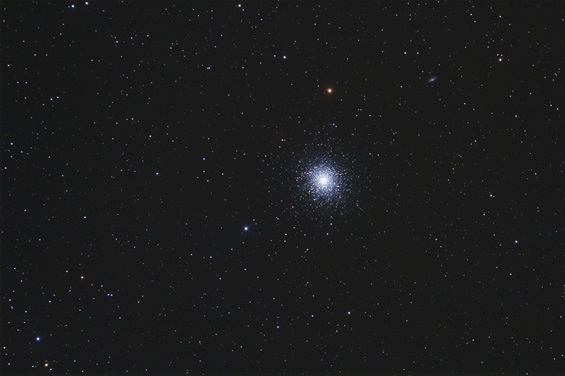 Globular Cluster M 13 in Hercules and galaxy NGC 6207 and IC 4617
Astro photo taken with APM 107 700 APO triplet and Canon EOS 550d modified at Gerlitzen Carinthia Austria
stack of 3 exp 800 ISO 8min each
Globular Cluster M 13 in Hercules and galaxy NGC 6207 and IC 4617
Astro photo taken with APM 107 700 APO triplet and Canon EOS 550d modified at Gerlitzen Carinthia Austria
stack of 3 exp 800 ISO 8min each
 Globular Cluster M 13 taken with 6inch Newton and coma corrector at f3,7, F550mm using Canon EOS 550d modified
5 exp 4-6 minutes each ISO 400
Globular Cluster M 13 taken with 6inch Newton and coma corrector at f3,7, F550mm using Canon EOS 550d modified
5 exp 4-6 minutes each ISO 400
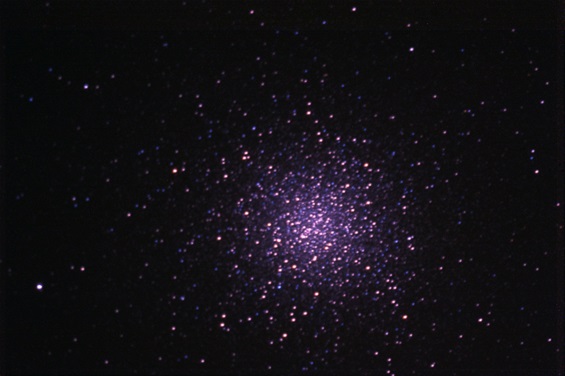 Global Cluster M13, the largest gc to be seen from Central Europe
Global clusters are orbiting the core of our Milky Way (and also other galaxies) as satellites. The density of stars is incredible! In a diameter of 1 parsec which could be understood as a scoop around the sun with a diameter of 3,3lightyears, our sun with all the planets of our solar system is the only star. Our next neighbor Proxima Centauri is more than 4 lightyears away,
However in case of a star being in the center of a globular cluster, there would be 100 to 1000 stars packed in the same area!!! Imagine the view from a potential planet in such a gc!!
Astro photo taken with a Celestron C 14 and modified Canon Eos 40d, 4m focal length 30km east of Vienna, Austria
Astrophoto C14
Global Cluster M13, the largest gc to be seen from Central Europe
Global clusters are orbiting the core of our Milky Way (and also other galaxies) as satellites. The density of stars is incredible! In a diameter of 1 parsec which could be understood as a scoop around the sun with a diameter of 3,3lightyears, our sun with all the planets of our solar system is the only star. Our next neighbor Proxima Centauri is more than 4 lightyears away,
However in case of a star being in the center of a globular cluster, there would be 100 to 1000 stars packed in the same area!!! Imagine the view from a potential planet in such a gc!!
Astro photo taken with a Celestron C 14 and modified Canon Eos 40d, 4m focal length 30km east of Vienna, Austria
Astrophoto C14
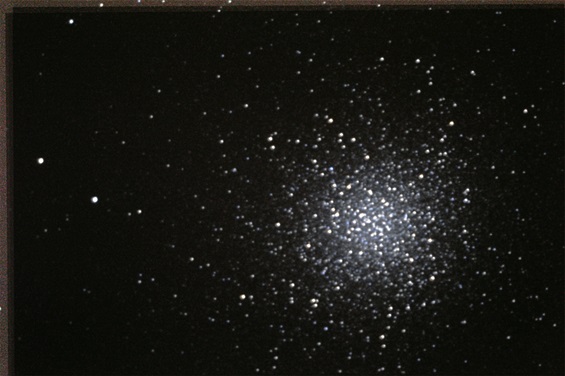 Global Cluster M13, Astro photo taken with a Celestron C 14 4m focal length and Canon Eos 7d, 30km east of Vienna, Austria
Astrophoto C14
Global Cluster M13, Astro photo taken with a Celestron C 14 4m focal length and Canon Eos 7d, 30km east of Vienna, Austria
Astrophoto C14
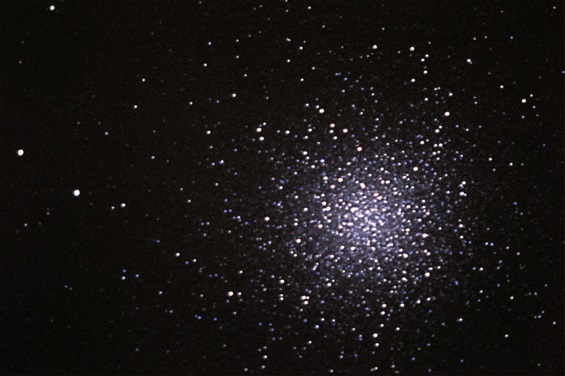 Global Cluster M13, Composite of the 2 astro photos abaove.
Astrophoto C14
Global Cluster M13, Composite of the 2 astro photos abaove.
Astrophoto C14
 Globular Cluster M13 taken with Celestron C 14 using focal reducer at F=2500mm and Canon Eos 450d mono for Luminance and Canon 40d mod for RGB:
Luminance: 1x340sec ISO 400, 2x 340sec ISO 800, 3x 640sec ISO 800 with CLS filter
RGB: 3x340sec ISO 500
In the bottom left corner you can see also the galaxy IC 4617 which is about 520 million LY away.
astrophoto C14
Globular Cluster M13 taken with Celestron C 14 using focal reducer at F=2500mm and Canon Eos 450d mono for Luminance and Canon 40d mod for RGB:
Luminance: 1x340sec ISO 400, 2x 340sec ISO 800, 3x 640sec ISO 800 with CLS filter
RGB: 3x340sec ISO 500
In the bottom left corner you can see also the galaxy IC 4617 which is about 520 million LY away.
astrophoto C14
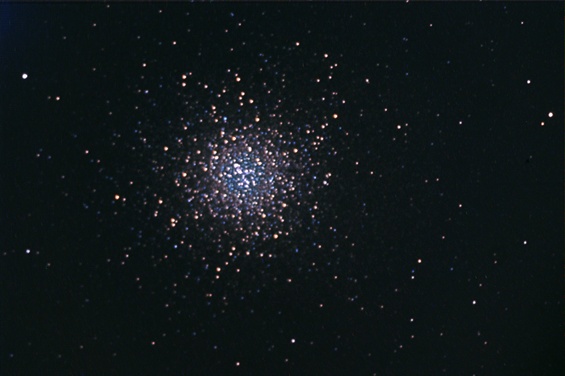 Globular Cluster M13 taken with Celestron C 14 at F=3910mm and Orion Starshoot Pro Color CCD Camera, 8 exp a 60sec
Astrophoto C14
Globular Cluster M13 taken with Celestron C 14 at F=3910mm and Orion Starshoot Pro Color CCD Camera, 8 exp a 60sec
Astrophoto C14
 Globular Cluster M13 taken with Celestron C14 and Orion Starshoot Pro CCD Camera, stack of 6 exp between 300 and 900 sec each and 3exp 120sec 2x2 binning
Globular Cluster M13 taken with Celestron C14 and Orion Starshoot Pro CCD Camera, stack of 6 exp between 300 and 900 sec each and 3exp 120sec 2x2 binning
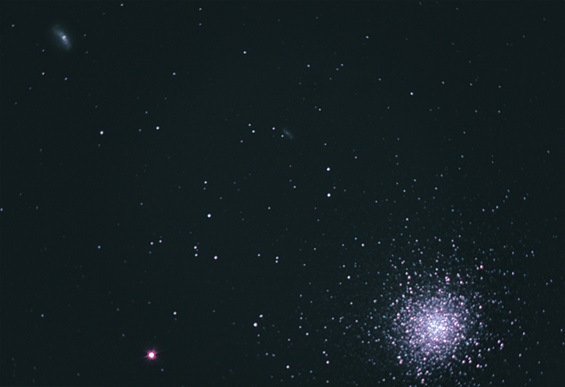 Globular Cluster M 13 in Hercules and Galaxy NGC 6207(48 mio LY away) and Galaxy IC 4817(140 mio LY away)
astro photo taken with Celestron C14 and focal reducer at f7
Luminance: 2x250 sec and 3x190sec ISO 1600 EOS 450d mono
RGB: 4x150 sec EOS 550d mod
Globular Cluster M 13 in Hercules and Galaxy NGC 6207(48 mio LY away) and Galaxy IC 4817(140 mio LY away)
astro photo taken with Celestron C14 and focal reducer at f7
Luminance: 2x250 sec and 3x190sec ISO 1600 EOS 450d mono
RGB: 4x150 sec EOS 550d mod
Open Clusters
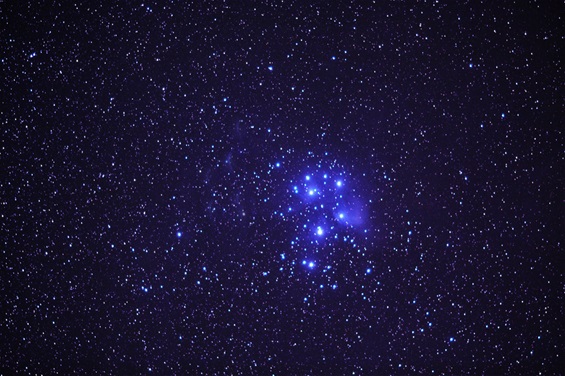 the famous Plejades star cluster
Astro photo taken using a Canon 200mm L lens in Death Valley
the famous Plejades star cluster
Astro photo taken using a Canon 200mm L lens in Death Valley
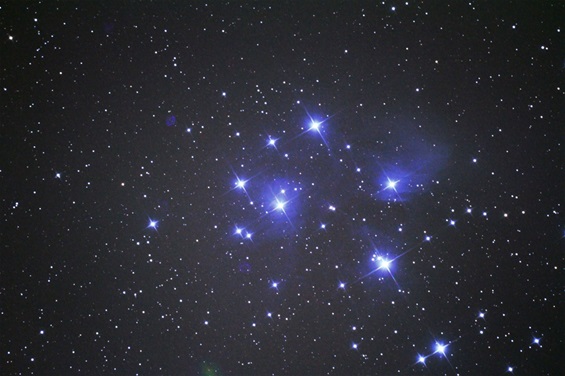 Plejades, the famous open star cluster in Taurus 400 lightyears away and abou 15 lightyears diameter and the blue Plejades reflection nebula
Astro photo taken with Skywatcher Newton 0,6m focal length and 13cm aperture on EQ3 mount guided by MGEN on the south coast of Crete Greece
Plejades, the famous open star cluster in Taurus 400 lightyears away and abou 15 lightyears diameter and the blue Plejades reflection nebula
Astro photo taken with Skywatcher Newton 0,6m focal length and 13cm aperture on EQ3 mount guided by MGEN on the south coast of Crete Greece
 Plejades M 45 taken with APM APO 107/700 mm and Canone EOS 550d modified at Emberger Alm. stack of 3 exp each 370 sec ISO 1600
Plejades M 45 taken with APM APO 107/700 mm and Canone EOS 550d modified at Emberger Alm. stack of 3 exp each 370 sec ISO 1600
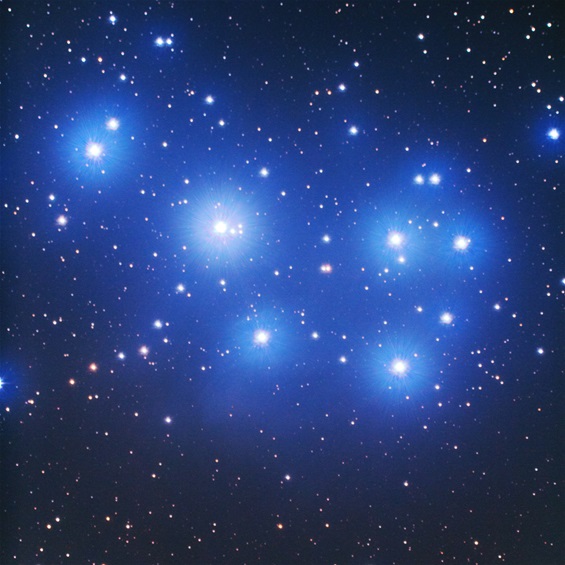 Plejades M 45 taken with APM APO 107/700 mm and focal reducer 0,79 and Canon EOS 550d modified at Emberger Alm. stack of 3 exp
Plejades M 45 taken with APM APO 107/700 mm and focal reducer 0,79 and Canon EOS 550d modified at Emberger Alm. stack of 3 exp
|
|
 |
|
|
|